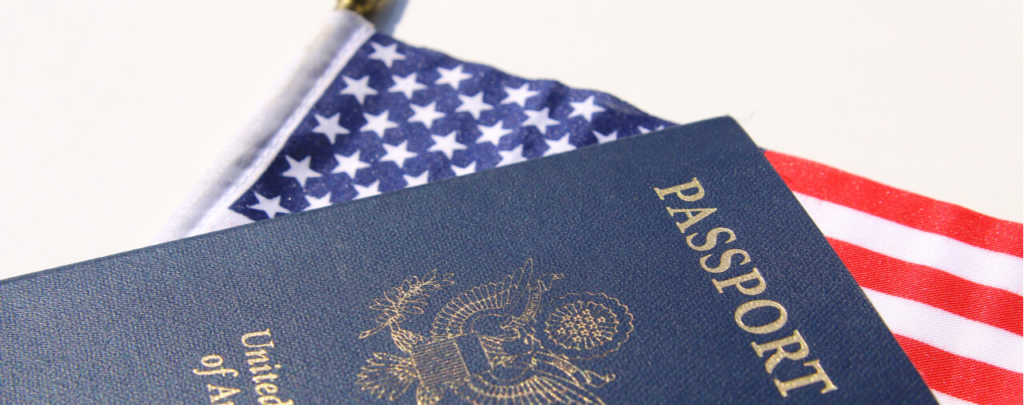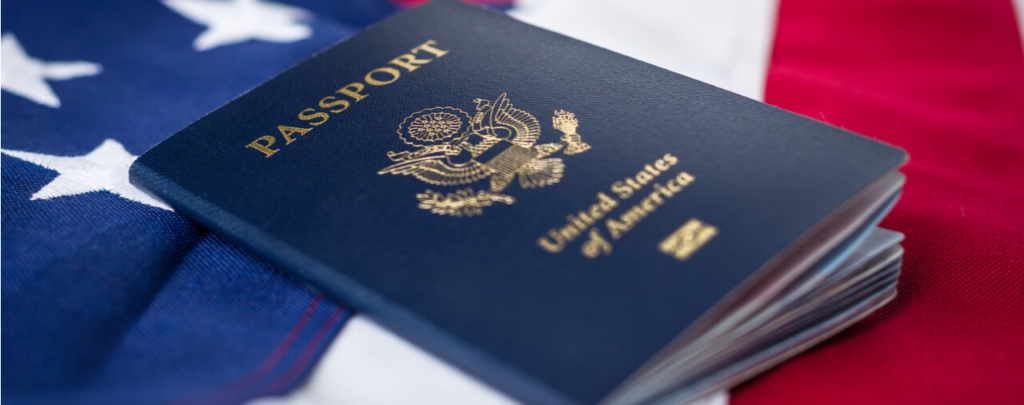(June 13, 2017 Update): On June 13, 2017, the Supreme Court of the United States decided this case Sessions v. Morales-Santana, 582 U.S. __ (2017) [PDF version]. Please see our full article to learn more [see article]. This recap of the oral arguments is otherwise presented as it was at the time of publication, without reference to the subsequent decision.
Introduction: Case Background for Lynch v. Morales-Santana
On November 9, 2016, the United States Supreme Court head oral arguments in Lynch v. Morales-Santana, No. 15-1191. Morales-Santana v. Lynch is a case before the Supreme Court on appeal from a decision of the United States Court of Appeals for the Second Circuit titled Morales-Santana v. Lynch, 804 F.3d 520 (2d Cir. 2015) [PDF version]. The litigation concerns whether the Immigration and Nationality Act, having previously contained different physical presence requirements for the foreign-born children of unwed U.S. citizen mothers for the purpose of derivation of U.S. citizenship than it had provided on for the foreign-born children of unwed U.S. citizen fathers, violates the U.S. Constitution’s guarantee of equal protection. The Second Circuit held that there was an equal protection violation, and it conferred U.S. citizenship upon the respondent who had been unable to derive citizenship through his U.S. citizen father where he would have been had his U.S. citizen parent been his mother. The Supreme Court is now considering, first, whether there is an equal protection violation in the previous statutory scheme for the derivation of citizenship and, if so, what the appropriate remedy is.
Before reading this article, please see our full article on the Second Circuit decision and the Supreme Court’s decision to take the case on appeal [see article]. This article will presume that readers have familiarity with the case and the issues from our previous article. In this article, we will examine the oral argument conducted in Lynch v. Morales-Santana, and the clues that may be gleaned with regard to the thinking of the Justices regarding this very important case. Please see the following link for a PDF version of the oral argument transcript [PDF version]. To learn more generally about the derivation of citizenship for children born abroad, please see our full article [see article].
Recap of the Oral Argument
In oral arguments before the Supreme Court, both sides have the opportunity to present their arguments and address questions from the Justices. The Deputy Solicitor General of the United States, Edwin S. Kneedler, ESQ., represented the U.S. Government. Stephen A. Broome, ESQ., represented the respondent, Luis Ramon Morales-Santana.
Government
Deputy Solicitor General Kneedler began by noting that the U.S. Constitution does not confer citizenship to individuals born outside of the United States [see article on jus soli citizenship in the United States]. Accordingly, the Constitution leaves it up to Congress to set the circumstances under which persons born abroad can be granted U.S. citizenship by statute.
The Government argued that Congress’s goal in creating the statutes at issue in Morales-Santana was to ensure that persons deriving citizenship “have demonstrated [a] sufficient connection to the United States, either in themselves or through their parents, to warrant the conferral of citizenship, because citizenship carries with it attendant duties and rights on the part of the individual, and important duties of protection and obligation on the part of the United States government.” Furthermore, the Government argued that a primary consideration of the gender-based distinction was to ensure that the child of a U.S. citizen mother who is born abroad would not end up stateless. The Government argued that the Supreme Court has, in previous cases, “made clear that mothers and fathers are not typically similarly situated with respect to their legal status concerning the child at the moment of birth.”
The Government faced pointed questions regarding its position from the Justices. In response to the Government’s argument that the gender-based differences were justified because the mother is “often” the “only legally recognized parent” “at the moment of birth,” Justice Ruth Bader Ginsburg noted that there were many cases, “especially generations back when this law was on the books,” where an unwed couple would receive a birth certificate “sometime after the child was born,” and the names of both parents would be on it.
Justice Sonia Sotomayor asked why the rule should be different in the case where a U.S. citizen father legitimized the child born to an unwed mother than when the U.S. citizen parent is the mother. The Government’s response was that in the case where a U.S. citizen father legitimizes the child, there are “competing ties,” and that Congress wanted to make sure that the strength of the U.S. citizen father’s ties were sufficient. Justice Elena Kagan then inquired as to whether Congress could have achieved its goals — ostensibly ensuring ties to the United States and preventing statelessness — by writing the statute in a gender-neutral way. Specifically, Justice Kagan phrased the question as whether the statute, as written, constitutes a violation of equal protection regardless of the benefits attested to by the Government.
Under questioning from Justices Kagan and Stephen Breyer, the Government argued that a key reason for the gender-based distinction in the derivation of citizenship is the presumption that an unwed U.S. citizen mother will have sole discretion over the decision-making regarding the child’s upbringing. The countervailing presumption advanced by the government is that the U.S. citizen father of such a child would not have sole discretion over the child’s upbringing, even if he legitimizes the child. The government reasoned that this difference in discretion justifies stricter requirements for an unwed U.S. citizen father to confer citizenship at birth to a child born abroad.
Justice Ginsburg then weighed in again, noting that the statutes in question were written in 1940 and 1952. Justice Ginsburg stated that in the 1970s, the Supreme Court recognized in “a whole series of cases” that gender-based distinctions such as the ones at issue in the instant case court are suspect. She specifically cited to Trimble v. Gordon, 430 U.S. 762 (1977), wherein the Supreme Court struck down distinctions in inheritance between legitimate and illegitimate children under the equal protection clause. The Government argued that the instant case was not controlled by the cited precedent because the respondent in the instant case was an alien born outside of the United States and thus did not have constitutional rights as such.
The latter half of the oral argument shifted to the appropriate remedy in the event that the Supreme Court granted relief. The Government argued that, even if the Supreme Court sided with the Second Circuit on equal protection grounds, it should find that the Second Circuit erred in granting the respondent citizenship.
Justice Kagan noted that, in general, when the Court finds an equal protection violation, it grants relief by “leveling up” rather than “leveling down.” The Government’s response was to argue that the Court should, in the event that it “[excises] the unconstitutional part of the statute,” it should by applying the the more stringent derivation of citizenship requirement for the children of unwed fathers to unwed mothers as well. Beyond that, the Government argued that the Court should then let Congress “step in and address the problem.” Justice Samuel Alito noted that if the Court “leveled up” instead of “down” as suggested by the Government, the individual in the instant case “would be given preference over someone who was similarly situated except for the fact that that person’s parents were married,” thus seeming to grant an issue suggested by the Government regarding leveling up. Justice Ginsburg did not seem content with this approach, noting that under the Government’s solution, the respondent’s parents would continue to have been treated unequally. Justice Kagan noted that by leveling down, the respondent would be entitled to no relief whatsoever notwithstanding having proven an equal protection violation.
Respondent
The attorney for the respondent, Stephen A. Broome (henceforth “the respondent”), argued that the disparate rules for unwed U.S. citizen mothers and fathers did not serve either of the professed interests of the government — reducing statelessness or ensuring that citizenship is derived only by children “who are likely to learn American values.” The respondent argued that the statute in question should be subjected to “immediate scrutiny,” the second highest level of scrutiny, below strict scrutiny and above rational basis review. In short, the respondent framed the issue as being that the Respondent’s father’s rights were violated on equal protection grounds by his not being able to transmit citizenship on equal terms with a similarly situated U.S. citizen mother.
Justice Breyer inquired whether “leveling up” would in fact make it more difficult than “leveling down” or even no “leveling” for certain individuals to establish eligibility to confer citizenship under the rules, given the complex array of statutes and difference in the old derivation of citizenship rules for married and unmarried parents. The respondent did not find this likely, but nevertheless suggested that the Court could resolve the issue — if it were “troubled” — by leaving “both options on the table.”
Justice Anthony Kennedy inquired what would happen of the Court leveled down. The respondent suggested that, if the Court decided to level down, people who derived citizenship through a U.S. citizen mother and who would not have met the stricter requirements for U.S. citizen fathers would face the potential loss of citizenship. Justice Kennedy disagreed, suggesting that such a ruling would be applied prospectively given the case law regarding the loss of citizenship. The respondent argued, prompted by Justice Kagan, that since you could not take citizenship away, the Respondent himself would continue to be treated unequally as compared to those who derived citizenship through the more lenient rules for unwed U.S. citizen mothers and who would be unaffected by a prospective ruling.
Justice Ginsburg inquired whether leveling up would create a subsequent equal protection problem by making the derivation of citizenship rules less strict for both unwed U.S. citizen mothers and fathers than for a married U.S. citizen and alien parent. The respondent suggested that this incongruity was already in the statute, and that the Court need not address the old rules for derivation of citizenship with married couples where one parent is a U.S. citizen. Justice Samuel Alito inquired whether the Court had ever devised “a remedy that deepens and extends an equal protection violation.” The respondent noted, prompted by another question from Justice Ginsburg, that the “discrimination” in would not be gender-based and. if anything, would be legitimacy-based. Justice Alito persisted, however, observing that the level of scrutiny for legitimacy-based discrimination would be the same and that leveling up for the respondent without addressing the old rules for married couples would extend the discrimination issue.
The respondent responded by arguing that Congress had rational reasons for treating the children of unmarried parents different than the children of married parents. Specifically, the respondent argued that the children of unmarried parents were more vulnerable to issues such as potential statelessness than the children of married parents. Furthermore, the respondent argued that, even if leveling up created an equal protection problem with regard to legitimacy-based discrimination, such discrimination would not change the fact that the statutes in question codified an equal protection violation based on gender-based discrimination.
Justice Alito questioned the accuracy of the respondent’s assertion that Congress’s intent was to offer more protection to the children of unmarried parents. The respondent stood by his assertion, citing to Congress’s documented concerns in passing the statute, and further noted that the that Congress had baldly assumed that the guardian parent in such cases would always be the mother. Justice Alito continued, however, noting that he found it unlikely that Congress intended to discriminate against children of married parents in favor of children of unmarried parents. Justice Ginsburg suggested, instead, that Congress had intended to giving a benefit to the child of an unmarried U.S. citizen mother, with which the respondent concurred.
Justice Kennedy then inquired whether the Court should consider it a problem if a significant number of persons were to suddenly qualified for citizenship if it were to level up. The respondent argued that the Court should only be concerned with whether the statute entailed an equal protection violation, and that the “leveling up” remedy would serve to satisfy Congress’s intent of preventing statelessness and ensuring that individuals would have the requisite ties to the United States. The respondent agreed with a suggestion by Justice Sotomayor that, given the myriad requirements that would still exist if the Court were to level up, the class of persons who would be eligible to claim citizenship from birth on the basis of a U.S. citizen father would still be relatively small.
Justice Kagan suggested an alternative remedy if the Court were to find an equal protection decision — it could stay its judgment for a period of time and allow Congress the opportunity to come up with a legislative solution. The respondent argued that relief should be granted in the instant case to remedy the equal protection violation, regardless. Furthermore, the respondent argued that were Congress to take on the issue today, it would likely adopt a solution along the lines of leveling up, as it had already consistently reduced the requirements on U.S. citizen fathers to confer citizenship on a child born abroad to an alien mother, last addressing the issue in 1986 prior to any challenges to the disparity being brought before the Supreme Court.
Chief Justice John Roberts stated that the question was not what Congress would do today, but what Congress intended in codifying the statute in question in 1940 and 1952. Justice Ginsburg appeared to disagree with the Chief Justice’s focus, stating that the question was “strange in this context” because “Congress sitting then took gender-based lines for granted.” The respondent further argued that leveling down would also violate Congress’s intent by withdrawing a benefit from children born abroad to unwed U.S. citizen mothers. Chief Justice Roberts persisted, asking if it was in fact the respondent’s position that the question was not Congress’s intent in passing the statute and what it would have done, but what the Congress of today would do. The respondent suggested that it was, but upon questioning from Justice Breyer, acknowledged that he knew of no case law for or against this position.
Chief Justice Roberts disagreed, stating that there were many cases that considered the intent of a Congress in passing a statute and none that focused on what the present Congress would do instead. Justice Ginsburg then weighed in again, stating that it would be hard to apply the intent of Congress when the Congress then saw the man as being the dominant person in the family and the woman as the subordinate person. Chief Justice Roberts then told the respondent to not pretend “that you’re implementing Congress’ intent when you look at what … a Congress 60 years later would do.” Justice Breyer suggested that the proper way to look at the case was to inquire what Congress would have done knowing that its approach would be struck down, and whether it would have chosen between leveling up or leveling down. The respondent agreed with this point.
Finally, prompted by questioning from Justices Breyer and Sotomayor, the respondent argued that the statute, as written, still carried the risk of statelessness where a child was born to a U.S. citizen mother who could not meet the more lenient requirement, thus undermining the professed purpose of the statute.
Conclusion
The oral argument for Lynch v. Morales-Santana leaves open many possibilities for the ultimate outcome of the case. Justice Ginsburg was especially active in her questioning of the Government’s claim that the statute did not create an equal protection violation. She was at times joined in her questioning by Justices Kagan and Breyer as well. It is important to note that because there are only eight Justices, a 4-4 tie would result in the decision of the Second Circuit being upheld, but not creating a national precedent and leaving a circuit split in place.
Much of the discussion in the oral argument, especially during the oral argument of the attorney for the respondent, focused on what to do if the Court found an equal protection violation. Justices Ginsburg and Breyer at times seemed to advocate for a leveling up approach. Justices Alito and Kennedy seemed concerned with the potential that leveling up would create new equal protection violations based on legitimacy. Justice Kagan, who was the first to bring up the question of leveling up versus leveling down, suggested an alternative approach, that the Court could give Congress time to resolve the issue through legislation. Although this presents the possibility for compromise, Chief Justice Roberts seemed concerned with the respondent’s lack of focus on the intent of Congress in passing the legislation.
With oral arguments complete, we now wait for the Supreme Court’s decision in this important case. We will update the website with a recap and analysis when the Court issues its decision.





